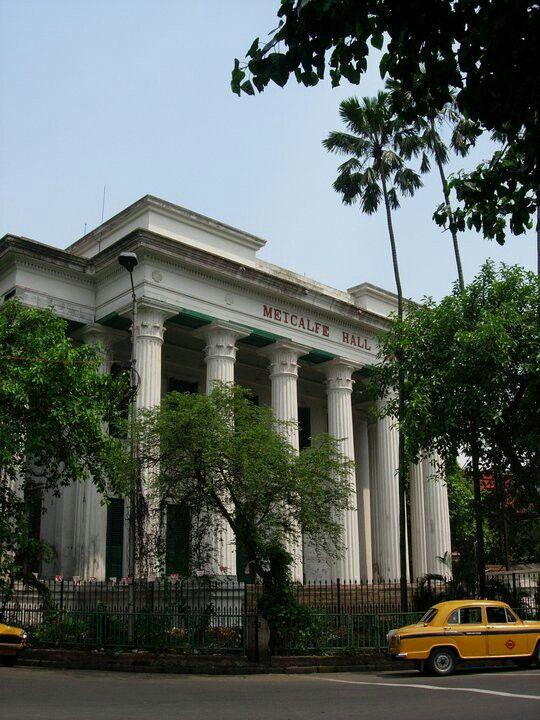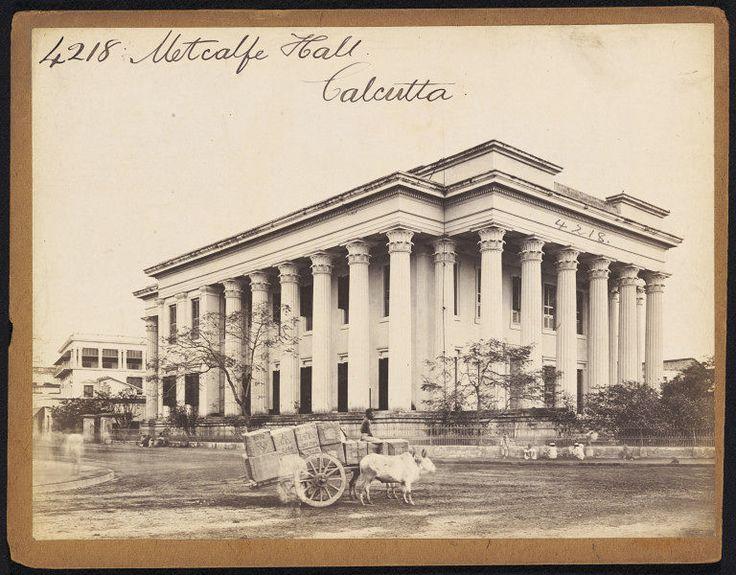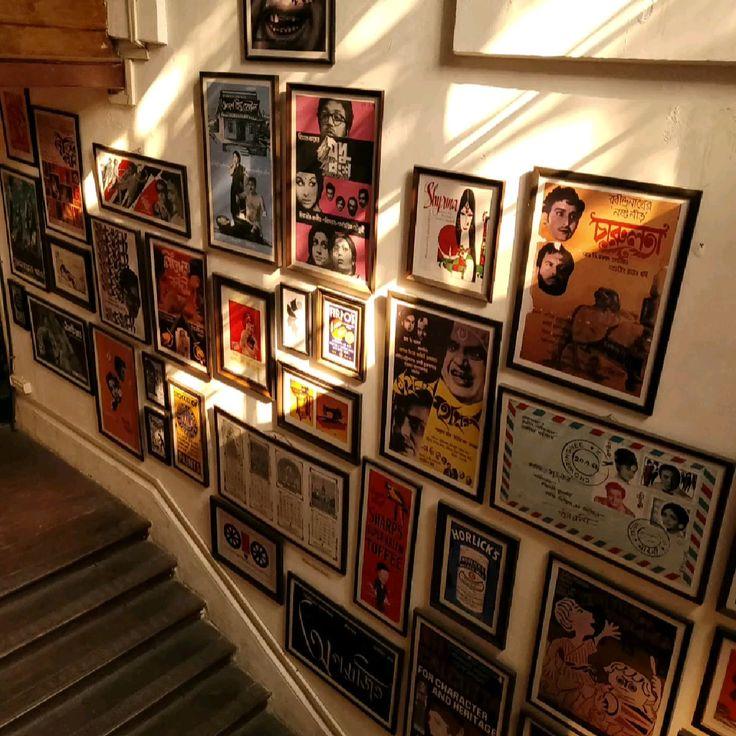



Table of Contents
- Introduction
- Key Highlights
- Historical Background
- Evolution Over Time
- Architectural Significance
- Interior Layout
- Cultural Importance
- Visitor Experience
- Conclusion
- Faq's
Introduction
Metcalfe Hall, a prominent heritage building located in the heart of Kolkata, India, stands as a testament to the city's colonial past and architectural grandeur. Situated at the junction of Strand Road and Hare Street, this iconic structure overlooks the Hooghly River and is a significant landmark in the city's business district. Built between 1840 and 1844, Metcalfe Hall was named after Sir Charles Theophilus Metcalfe, the Governor-General of India, in recognition of his contributions to promoting a free press during British rule. This article delves into the history, architecture, significance, and current status of Metcalfe Hall.
 Metcalfe Hall, Pinterest
Metcalfe Hall, Pinterest
Key Highlights
Key Highlights of Metcalfe Hall | Details |
Location | Situated at the junction of Strand Road and Hare Street, Kolkata, overlooking the Hooghly River. |
Historical Significance | Built between 1840 and 1844, named after Sir Charles Theophilus Metcalfe, Governor-General of India, known for his contributions to freedom of the press. Originally housed the Calcutta Public Library. |
Architectural Style | Neoclassical architecture inspired by ancient Greek temples, resembling the Temple of Winds in Athens. Features 30 Corinthian columns and a grand façade. |
Restoration | Recently restored by the Archaeological Survey of India (ASI) and reopened as a museum in 2019, showcasing Kolkata's cultural heritage. |
Exhibitions | Home to the "Ami Kolkata" exhibition, which explores Kolkata's history and culture through artifacts, photographs, and multimedia displays. |
Notable Displays | Includes a full-sized wooden boat, videos of Kolkata projected on muslin screens, black-and-white photographs of iconic buildings, and arts and handicrafts from Bengal such as Shola. |
Visitor Experience | Offers guided tours, photography opportunities, and interactive exhibits where visitors can leave notes expressing their thoughts on Kolkata. |
Opening Hours | Open daily from 10:00 AM to 5:00 PM; closed on Mondays and national holidays. No entry fee required. |
Cultural Programs | Hosts workshops and events that promote local arts, crafts, and community engagement with Kolkata's rich cultural traditions. |
Viewpoints | Visitors can enjoy views of Strand Road and the Hooghly River from the first-floor gallery windows. |
Historical Background
The origins of Metcalfe Hall can be traced back to a public meeting held in 1835, where the idea of constructing a hall to honor Lord Metcalfe was proposed. The hall was intended to serve as a venue for intellectual discourse and cultural activities while housing the Calcutta Public Library, which had been established in 1836. This library aimed to provide access to literature for the burgeoning educated class in Kolkata. The construction of Metcalfe Hall was overseen by Charles Knowles Robinson, who was then serving as the city magistrate. The foundation stone was laid on December 19, 1840, by Dr. James Grant, the Grand Master of Bengal.
The building was constructed by Burn & Co., with funding sourced from public subscriptions amounting to Rs. 68,000. Upon its completion in 1844, it became a hub for intellectual discourse and cultural activities in Kolkata. Initially housing the Calcutta Public Library on its first floor, the ground floor was occupied by the Royal Agri-Horticultural Society. Over time, Metcalfe Hall evolved into a space where ideas flourished and where many significant discussions about governance and society took place during British rule.
Also Read: Park Street Kolkata: A Melting Pot of Culture, Cuisine, and Celebrations
Evolution Over Time
Throughout its history, Metcalfe Hall has undergone various transformations that reflect both the changing political landscape of India and shifts in public interest towards heritage preservation. In 1891, it became home to the Imperial Library, which later evolved into what is now known as the National Library of India. This transition marked a significant moment in its history as it began to serve a broader audience beyond just local scholars.
However, by the early 20th century, the building's condition began to deteriorate due to neglect and lack of maintenance. Its architectural beauty faded as years went by without proper care. In recognition of its historical value, it was declared a protected monument in 1992 under India's heritage conservation laws. Despite this designation, Metcalfe Hall remained largely unused until recent restoration efforts began in 2018.
Significant renovations were undertaken by the Archaeological Survey of India (ASI), leading to its reopening as a museum in 2019. This revitalisation not only restored its physical structure but also reestablished its role as an important cultural institution within Kolkata.
Architectural Significance
Design and Style
 Source: Victoria and Albert Museum
Source: Victoria and Albert Museum
Metcalfe Hall is celebrated for its neoclassical architectural style, heavily inspired by ancient Greek temples most notably resembling the Tower of the Winds in Athens. The building features a grand façade supported by thirty massive Corinthian columns that create an impressive colonnade around its perimeter. This classical design reflects both grandeur and elegance, characteristic of colonial architecture during that era.
The structure is raised on a high plinth with a solid basement measuring approximately ten feet deep. The main entrance originally featured a grand flight of stairs leading up to an expansive portico facing west towards the Hooghly River; however, this entrance has since been closed off due to structural changes made over time. Currently, visitors access the building through an eastern portico on Hare Street.
The use of local materials combined with European architectural techniques showcases an interesting blend of cultures that defined much of Kolkata's colonial architecture. Intricate detailing can be seen throughout the building's façade and interior spaces, reflecting craftsmanship that was prevalent during its construction period. The overall design not only serves aesthetic purposes but also symbolizes the aspirations and ideologies of colonial governance at that time.
Also Read: The Best Sunrise Spots in Kolkata
Interior Layout
Internally, Metcalfe Hall consists of two stories with five spacious halls designed for various functions throughout its history. The ground floor currently houses rare foreign journals and manuscripts curated by the Asiatic Society alongside an exhibition space managed by ASI. This area is particularly significant as it preserves important literary works that highlight Kolkata's rich intellectual tradition.
The upper floor features galleries that host exhibitions related to Kolkata's history and culture. Notable displays include works related to prominent figures such as Satyajit Ray a legendary filmmaker and artifacts that reflect Bengal's artistic heritage. The interior layout is designed to facilitate both individual exploration and guided tours, allowing visitors to engage deeply with each exhibition.
Natural light floods through large windows that enhance the ambiance within these spaces while providing an inviting atmosphere for learning and reflection. The careful curation of exhibits aims to connect visitors with Kolkata's past while also celebrating contemporary artistic expressions from local artists. Each hall tells a story whether it's about literature, art, or social movements making Metcalfe Hall an essential destination for anyone interested in understanding Kolkata's multifaceted identity.
 Source: Pinterest
Source: Pinterest
Cultural Importance
Metcalfe Hall has played a pivotal role in Kolkata's cultural landscape since its inception. As one of the earliest public libraries in India, it served as a center for knowledge dissemination during a time when access to literature was limited for many Indians under colonial rule. The establishment of this library laid the groundwork for future educational institutions and libraries across India.
In addition to being a repository of knowledge, Metcalfe Hall became a gathering place for intellectuals who engaged in discussions about politics, literature, and social reform during British rule. It fostered an environment where ideas could be exchanged freely a rarity at that time thus contributing significantly to Bengal's rich literary tradition.
Modern-day exhibitions at Metcalfe Hall continue this legacy by exploring various aspects of Kolkata's rich history from colonial influences to contemporary art forms. Visitors can engage with multimedia displays that include photographs documenting Kolkata's evolution over time and artifacts representing local craftsmanship.
Furthermore, cultural programs hosted at Metcalfe Hall aim to promote awareness about Bengal's artistic traditions while encouraging community participation. By offering workshops and lectures on topics ranging from traditional crafts to modern artistic practices, Metcalfe Hall serves as both an educational resource and an incubator for creativity within Kolkata's vibrant cultural scene.
Visitor Experience
Today, Metcalfe Hall attracts both locals and tourists seeking to immerse themselves in Kolkata's historical narrative. The museum offers guided tours that provide insights into the building's architectural features and historical significance while highlighting important events that have taken place within its walls over time.
Highlights include rotating exhibitions featuring themes related to Kolkata's culture and history such as art installations celebrating local artists or displays focusing on significant historical milestones like independence movements or literary achievements from Bengal's past.
Architectural tours focus on key elements such as Corinthian columns or intricate ceiling designs inviting visitors not only to appreciate aesthetics but also understand their symbolic meanings within colonial context.
Moreover, cultural programs like workshops encourage active participation from visitors who wish to explore traditional crafts or learn about local folklore directly from artisans themselves creating opportunities for meaningful interactions between generations while fostering appreciation for heritage preservation efforts.
Visitors often comment on the serene atmosphere surrounding Metcalfe Hall especially given its picturesque location overlooking the Hooghly River a perfect backdrop for reflection on Kolkata's storied past while enjoying moments spent within this historic gem that continues inspiring curiosity among all who enter its doors.
Conclusion
Metcalfe Hall stands not only as an architectural marvel but also as a symbol of Kolkata's enduring legacy as a center of learning and culture. Its journey from a neglected monument to a revitalized museum illustrates the importance of preserving historical sites that embody collective memory and identity within urban landscapes undergoing rapid change.
Through ongoing efforts led by organisations such as ASI alongside community engagement initiatives aimed at raising awareness about heritage conservation practices Metcalfe Hall remains committed towards fostering connections between past narratives present-day realities shaping our understanding today.
As Kolkata continues evolving amidst globalisation pressures threatening local traditions the significance attributed towards preserving landmarks like Metcalfe Hall becomes increasingly vital ensuring future generations inherit stories rooted deeply within their cultural identities while appreciating diverse influences shaping their cityscape over centuries gone by
explore further
Latest from Contemporary ideas
More from Innovations
Resources
Dwello, for every home buyer, is a way to go from 'I feel' to 'I know', at no extra cost.




